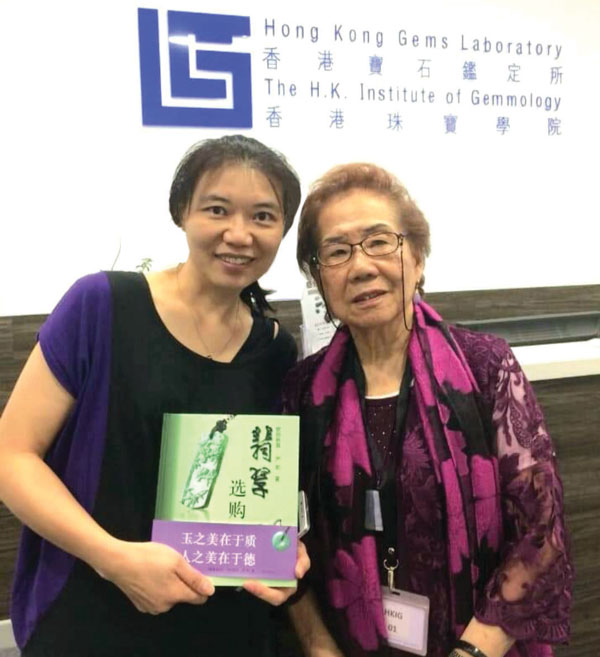Fei cui jade is highly appreciated in Eastern cultures for its beauty, power and good fortune, with rising interest in the Western world. The record prices received at auction as well as the growing demand for this remarkable gemstone bring us visit the book Fei Cui Jade – A Stone & A Culture.
After decades of enlightened accomplishments in the world of Fei Cui Jade, author Ou Yang Chiu Mei (Mimi) published Fei Cui Jade in collaboration with her son, Humphrey Yen. This exhaustive tome presents the scientific, gemological, and cultural aspects of Fei Cui Jade and its appreciation around the world.

Ou Yang Chiu Mei and Humphrey Yen
248 pages, 300,000 words
ISBN 978-7-5327-6471-6
First published 2015, updated 2019
Shanghai Translation Publishing House
www.yiwen.com.cn
The book begins by defining jade and where it is found, both historically and presently, dating back to the mid-19th century when French mineralogist Alexis Damour studied both Chinese Hetian jade and Burmese jade that had been imported into China. The book also discusses the terminology, noting that in modern mineralogy, jade encompasses two mineral groups—jadeite and nephrite—both with a compact fine-grained texture and high toughness.
Chapters 3, 4 and 5 delve into the many colors of jade and why the mineral occurs in so many colors, along with the different types of rough Fei Cui Jade.

Hoi Ling holding the Chinese version of Fei Cui Jade.
THE JADE LADY
Ou Yang, Chiu Mei (Mimi)—affectionately called The Jade Lady—is one of the world’s foremost authorities on jadeite jade, known as Fei Cui. Among many accomplishments, her illustrious career includes the discovery in 1983 of a terrestrial source of Ureyite, a groundbreaking achievement in both mineralogy and gemology. This led to her founding the Hong Kong Gems Laboratory and the Hong Kong Institute of Gemmology in 1987, both of which are recognized as leaders in Fei Cui Jade research and education. Professor Mimi’s prestigious and detailed work includes the first published observations of Fei Cui treatments found in the Hong Kong market, as all as her pioneering classification of treatments, establishing the terminology of Type A, Type B, Type C, Type B+C, and Type D, now common in the trade. Professor Mimi has also authored many gemological books including Jade Identification, Ruby and Sapphire Appreciation, Jadeite ABC, Selecting Jadeite and The Jade Collection, with the latter being an accumulation of over 30 years of work. Mimi has also contributed over 100 published research papers and articles, with the goal of spreading knowledge, because, in her own words: “Knowledge can change a person’s life, fate and achievements.”
Importantly, Professor Mimi was the first to introduce a systematic approach to the quality evaluation of Fei Cui Jade, known as 4C2T1V. Chapter 9 highlights these principles, teaching the reader about valuing the gem using 4C2T1V, which stands for: 4C meaning Color, Cut, Clarity and Cracks; 2T signifies Transparency and Texture; and 1V denotes Volume. This systematic approach to evaluate jade is quoted in Christie’s auction catalogs in Hong Kong.






The authors end the book with a discussion on the trading and marketing of Fei Cui Jade, including the official auctions in Myanmar as well as distribution centers for finished jade products. They also highlight remarkable jewelry designs and the various ways that Fei Cui Jade is used in today’s art.
For anyone interested in Fei Cui Jade, this book is a must-have. It is not only informative, but it is also a very enjoyable read.

















